After a brief vacation, Rocket Roundup is back with six launches, including three from SpaceX, another OneWeb, and two Chinese launches, including a supply mission to their new space station. Plus, this week in rocket history, we look back at an important mission to Venus, Venera 9.
Media
Transcript
Hello, and welcome to the Daily Space. My name is Annie Wilson and most weekdays the CosmoQuest team is here putting science in your brain.
Today, however, is for Rocket Roundup. We’ve got a whole lot of rocket launches to cover so let’s get to it, shall we?
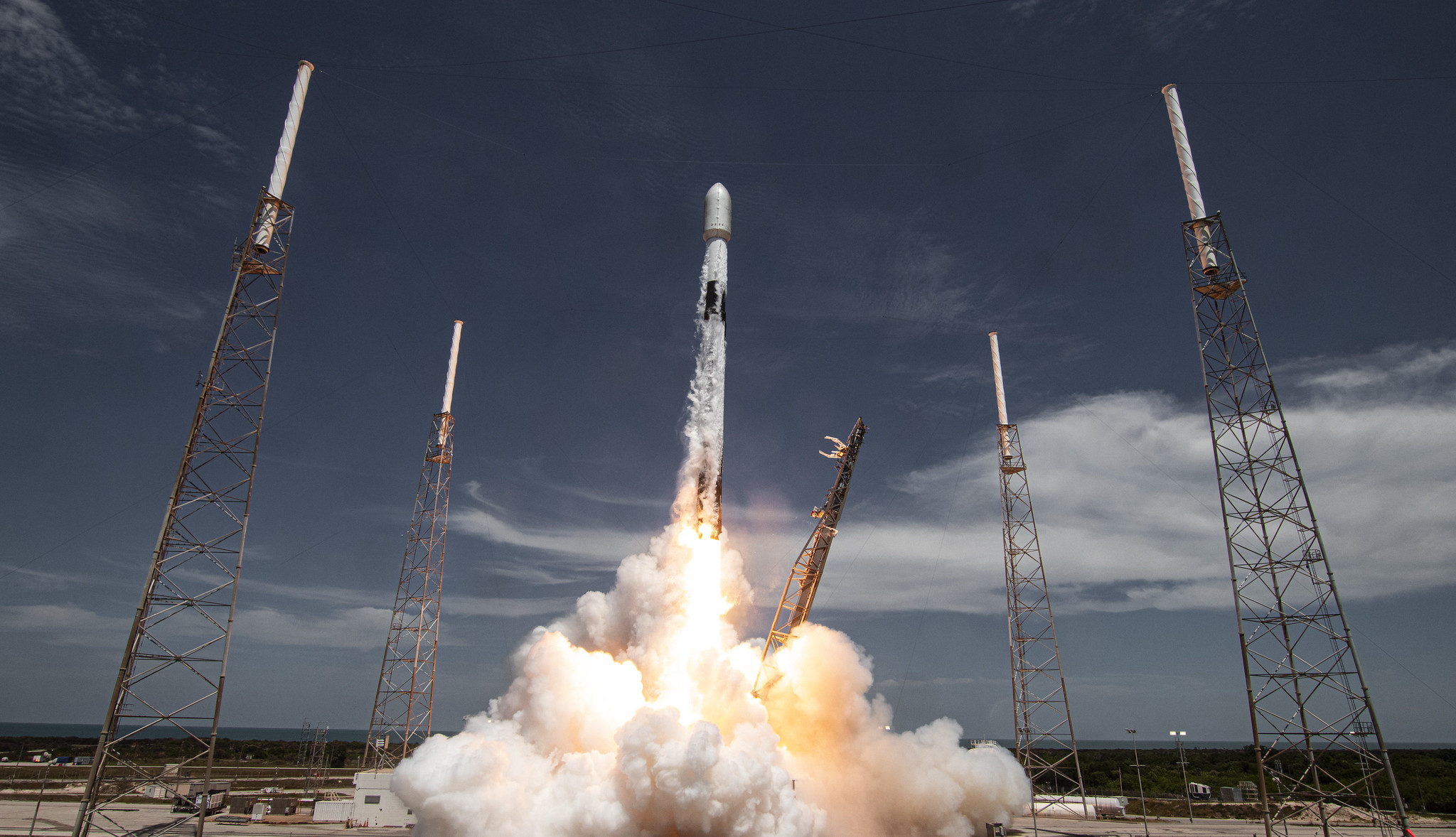
First up, on May 27 at 18:38 UTC the Starlink L28 mission launched atop Falcon 9 booster 1063 from SLC-40 at Cape Canaveral Space Force Station in Florida. This was only the second flight for Booster 1063, which successfully landed on the drone ship Just Read The Instructions.
If this seems like a low number of launches for a SpaceX booster, you’re right. Starlink missions usually use boosters that have flown many times. Boosters are assigned to missions months before liftoff and if something goes wrong — like the loss of a booster — there’s a bit of a shuffle to make sure all missions have a booster. In this case, the loss of B1059 on the Starlink 19 mission back in February 2021 resulted in B1063 being reassigned from the Double Asteroid Redirection Test mission for NASA, which has been delayed until November 2021. In order for that to happen, 1063 was trucked across the country from Vandenberg Space Force Base in California to the Cape for use in Starlink missions.
Both fairings were recovered, one making its fifth flight and the other its second. All 60 satellites were successfully deployed into orbit.

Next up, on May 28 at 17:38 UTC, an Arianespace-operated Soyuz 2.1b/Fregat launched another 36 satellites for the OneWeb satellite internet constellation from the Vostochny Cosmodrome in Russia.
Low clouds obscured the rocket after only a few seconds of flight so the webcast followed the rocket only briefly from the ground and then switched to the onboard cameras. Just under four hours after launch and several burns from the Fregat upper stage, the satellites were deployed in nine sets of four, bringing the total number of satellites in the constellation to 218, or about one-third of the total constellation.
On May 29 at 12:55 UTC, Tianzhou 2 was launched on a Long March 7 from the Wenchang Spacecraft Launch Site. Tianzhou 2 headed towards a rendezvous with the recently launched Tianhe Core Module of the China Space Station. Docking took place just over eight hours later at 21:01 UTC.
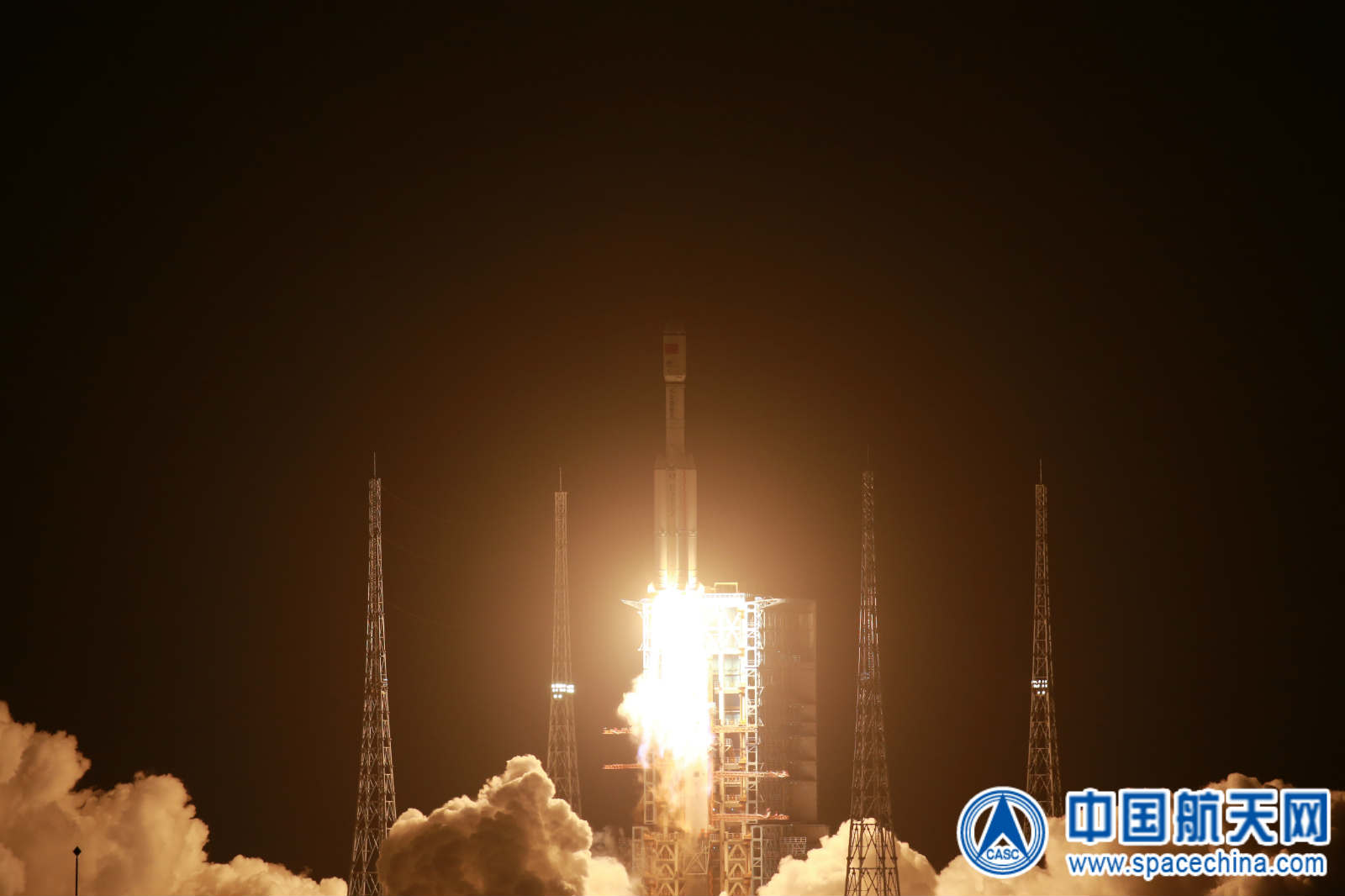
According to Chinese sources, Tianzhou 2 carries consumables for a three-month stay by three crew members and also brings two spacesuits, scientific experiments, station maintenance equipment, in addition to nearly two metric tons of propellant to replenish the station’s onboard propulsion systems. This amounts to nearly seven metric tons of supplies and cargo being delivered to the station.
Similar to the Long March 5B core stage from the launch of the Chinese space station last month, the Long March 7 second stage was left in orbit and should naturally deorbit in about two weeks. It only weighs six tons — much less than the twenty-two-ton 5B core stage — so its smaller parts will stand a better chance of burning up completely and not harming anything on the ground.
The launch of Tianzhou 2 was delayed from May 19 due to repeated technical problems. According to the Chinese space forum 9ifly, leaks in the rocket’s first stage liquid oxygen tank required engineers to climb into service compartments in the rocket to find the issue. These compartments are purged with nitrogen so the engineers needed to carry portable oxygen supplies. This is not easy to do in a confined space, but the leaks were eventually found and repaired.
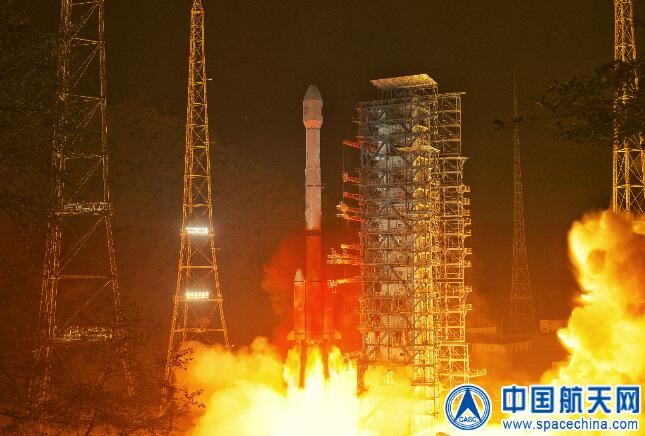
On June 3 at 16:17 UTC, a Long March-3B launched the Fengyun-4B weather satellite into a geostationary transfer orbit. Most of the satellite’s 5,300-kilogram launch mass was propellant, which will be used to raise it into geostationary orbit.
Fengyun-4B carries a suite of instruments for Earth observation, including the first high-resolution sounder to be put into geostationary orbit, as well as several imagers and a Space Environment Monitoring Package that contains a host of sensors designed to detect high energy particles, magnetic field changes, radiation, and surface charge.
Just a little over an hour later at 17:29 UTC, CRS-22 launched on shiny new Falcon 9 booster 1067. SpaceX threaded the needle between storms and was able to send the mission off on the first attempt. It successfully docked to the IDA-3 port on the ISS on June 5 at 09:09 UTC.
CRS-22 is the second flight of the newly upgraded Cargo Dragon 2 and carries the first of three pairs of ISS Roll-Out Solar Arrays in its unpressurized trunk. These will be installed on the station’s truss in front of the current solar panels, which will allow the new panels to use the current electrical channels on the station. The oldest panels on the station’s truss are pushing twenty years in space, the youngest twelve years old, and their output has degraded over the years from their extended time in space. The ISS needs more power for its future programs, including new commercial operations and the Artemis program. When all of the new panels are installed, power generation will be back to the amount provided by the eight panels when they were new.
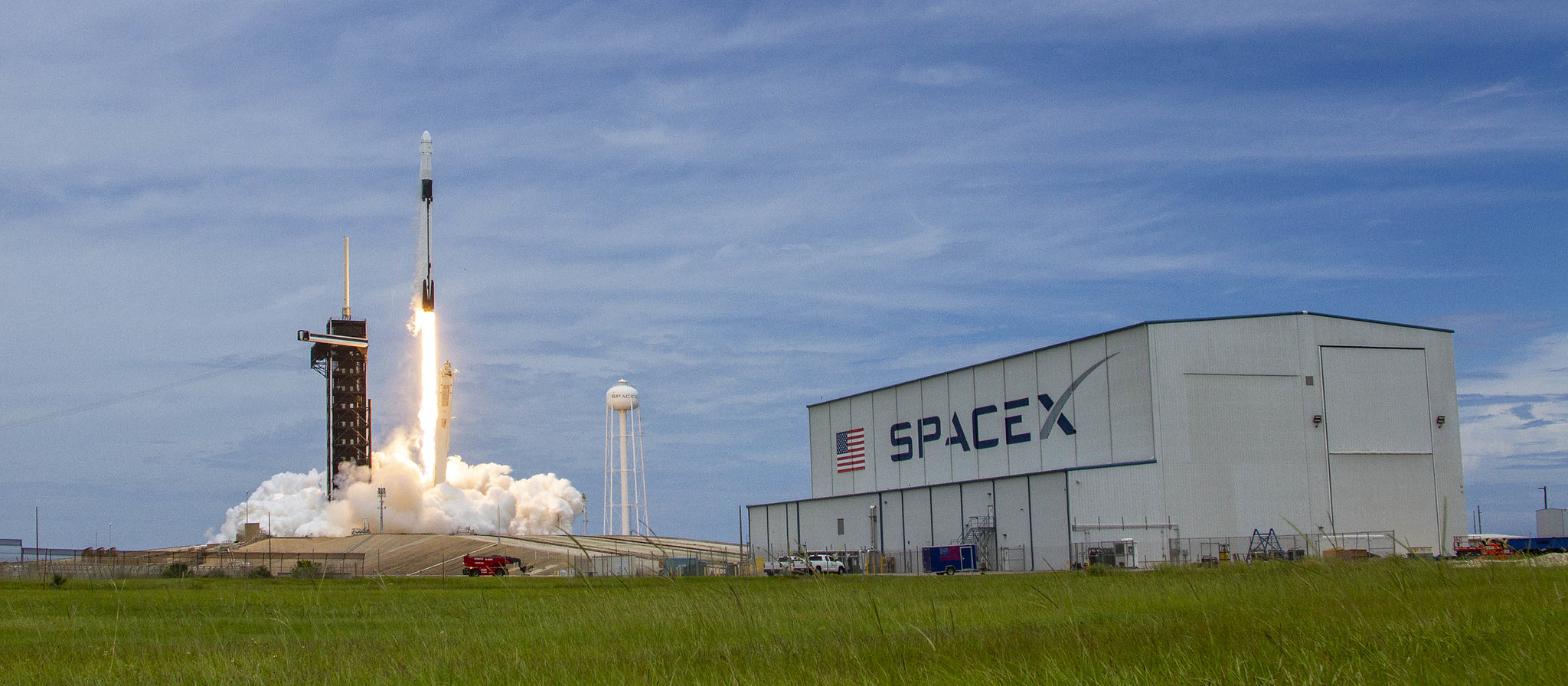
In addition to the new solar panels, CRS-22 also carried a number of experiments for the astronauts to perform, including new live animal experiments! One experiment, called Cell Science‑04, tracks how tardigrade gene expression changes across multiple, stressed-out generations. We know in humans that stress causes generational changes to our biology. Experimenting with humans is discouraged, so itty bitty, hard to kill tardigrade it is.
Researchers are exploring if and how the tardigrades adapt to the environment of space. The tardigrades arrived at the ISS frozen into two groups. One group will be thawed and active for only one generation, or one week, then put back in the freezer. The other set will be active for four generations, or two months, before also getting refrozen. All the tardigrade will eventually return to Earth, where their genomes will be sequenced and compared to pre-launch sequences to see what changed. With luck, the tardigrades will give us insight into space-related health problems, and facilitate the creation of countermeasures for human astronauts.
To learn about the other animal experiment – one involving squid – visit our website, DailySpace.org.
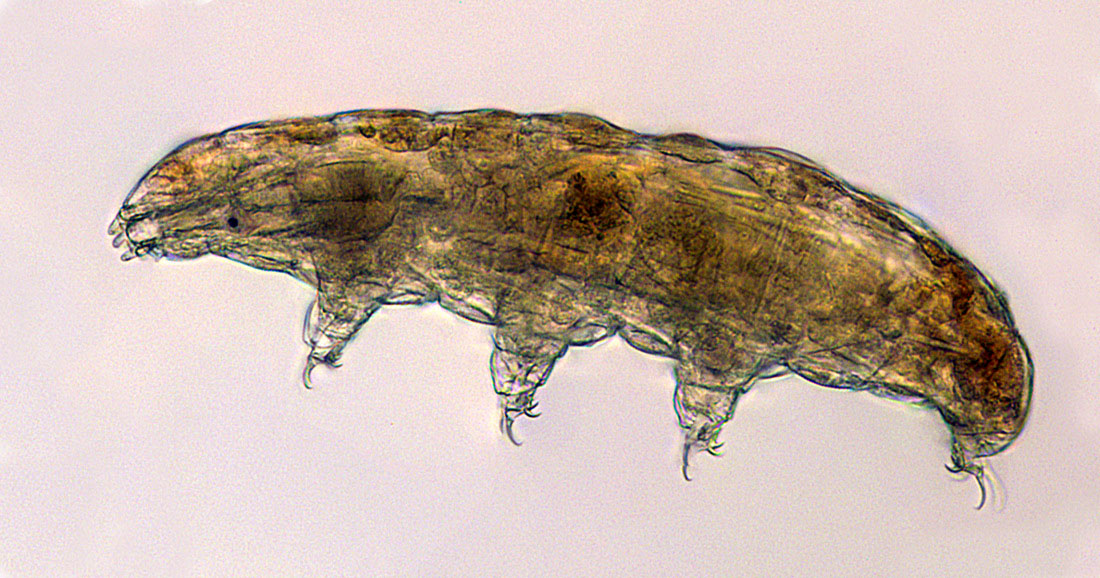
Another exciting experiment launched on CRS-22 involves a Butterfly IQ Ultrasound, a small, tablet-controlled commercial ultrasound unit. This common medical device will allow an astronaut to image the internal workings of their own body, including their internal jugular vein, the lungs, bladder, and kidneys. One of the strangely complicated parts of this research is the camera setup required to allow astronauts and technicians on the ground to work together. To make this happen, the tablet will have a camera pointed at its screen so the astronaut and tech can both see the images. A second camera will provide a view of the crew member so folks can watch and help with the experiments.
I feel like the astronaut in that story may count as another live animal experiment, and this next experiment… well, you decide for yourself.
As previously mentioned, Crew 2 is doing Tissue On A Chip investigations. CRS 22 launched Kidney Cells 2, which will investigate the formation of microcrystals or kidney stones. In this experiment, a small slide with cells will replicate the functions of a kidney, and monitor how microcrystals behave in zero-G. It’s hoped this will lead to better therapies for the prevention and treatment of kidney stones, which astronauts are particularly prone to because of dehydration and minerals loss that occurs in space.
On June 6 at 04:25 UTC, SpaceX’s Falcon 9 booster 1061 launched the SXM-8 satellite into geostationary transfer orbit for satellite radio provider SiriusXM.
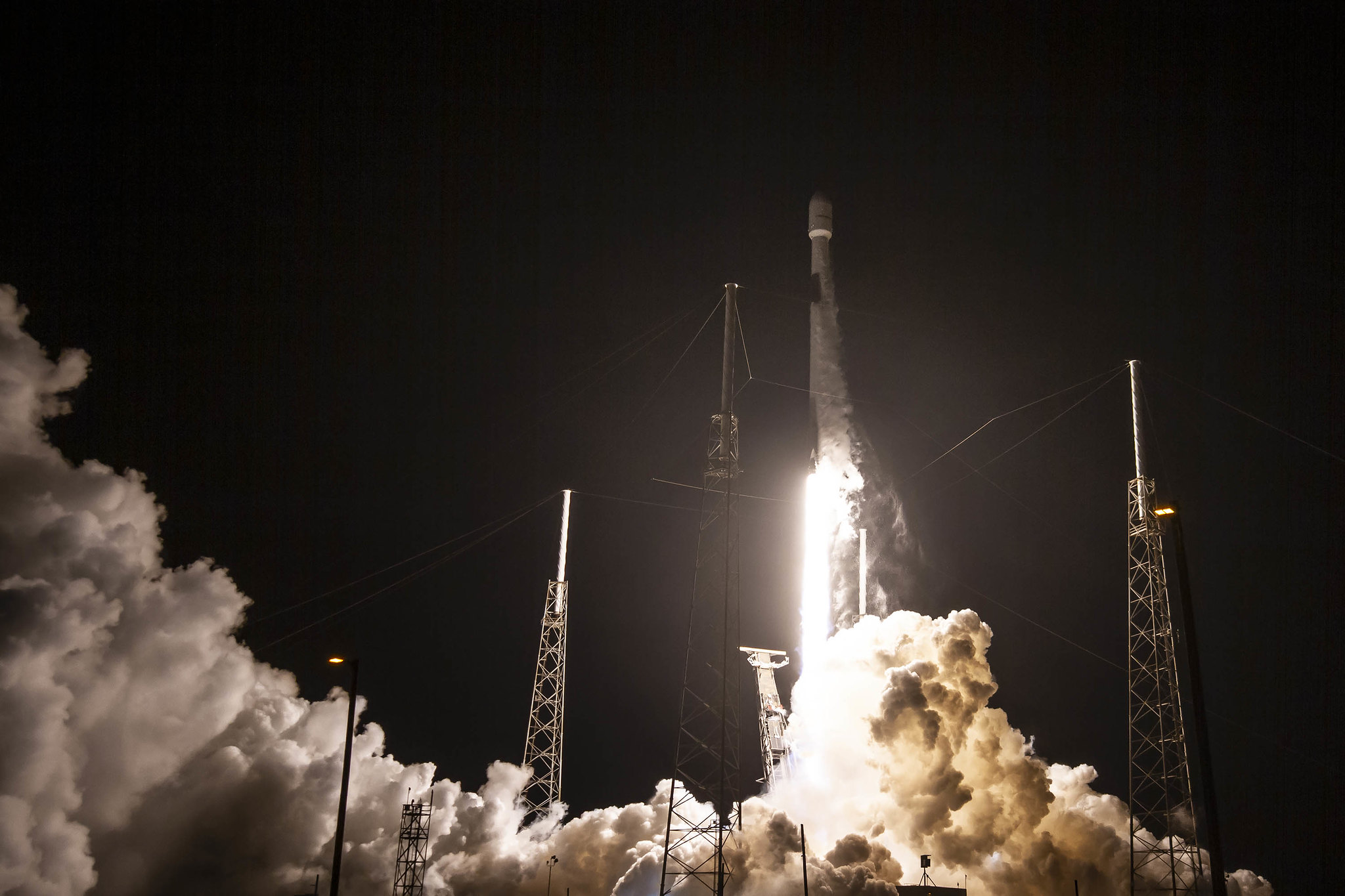
The fairings were brand new and successfully recovered from the water by SpaceX’s GO Navigator. Booster 1061 successfully landed on the drone ship Just Read The Instructions.
SXM-8 follows on the heels of SXM-7, which failed shortly after its launch in December 2020. SXM-8 was delayed several months to make sure it wouldn’t share its twin’s fate. Both satellites use the proven L-1300 bus that had previously worked over one hundred times. This mission was sorely needed as SiriusXM’s current satellites are aging, with XM-3 and XM-4 turning 16 this year.
Blasting our radios requires a massive satellite. SXM-8 uses a nine-meter diameter dish, which is taller than an average house, and solar panels that are longer than a 737 passenger plane’s wingspan. Weighing in at almost seven metric tons, SXM-8 is one of the heaviest commercial satellites ever launched.
After a fifteen-minute coast phase, the second stage restarted for a one-minute burn to deliver the satellite into its geostationary transfer orbit.
We throw around the phrase Geostationary Orbit a lot without really talking about this super useful orbit. First discussed in fiction by Arther C. Clark, this particular orbit is big enough that satellites orbit the planet at the same rate the planet rotates. If an orbit is exactly over the equator, and not inclined, that spacecraft will stay over the same point on Earth pretty much until the average length of a day changes.
The thing is, these orbits can be inclined, and when that happens, the spacecraft will slowly pace north and south along a single line of longitude. That’s not entirely useful if you’re a satellite TV provider where your customers have stationary dishes. Inclined, however, is the default for spacecraft launching from anywhere in the U.S.
The Falcon 9 has a pretty cool way to flatten out orbits. While they could achieve an orbit with the needed 35,789 kilometer highest point, or apogee, in one engine firing, that would put the satellite in a tilted and elliptical orbit, where the orbit’s closest point to the Earth would be somewhere off the coast of Florida, and the far point is on the opposite side of the world and south of the equator.
Fixing both the shape of the orbit to make it a circle and changing the tilt to align with the equator in different maneuvers would take a lot of fuel, so SpaceX doesn’t go straight out. Instead, the Falcon 9 coasts in a low orbit and restarts its engine at the equator so the spacecraft is left in an orbit where it arrives at 35,789 km altitude just as it passes over the equator. This alignment allows them to circularize their orbit and orient themselves over the equator in a single, fuel-saving maneuver. That fuel savings on reaching orbit translates into more fuel for keeping the music flowing. SXM-8 should be able to keep Sirius Radio broadcasting for at least 15 years.
This Week in Rocket History
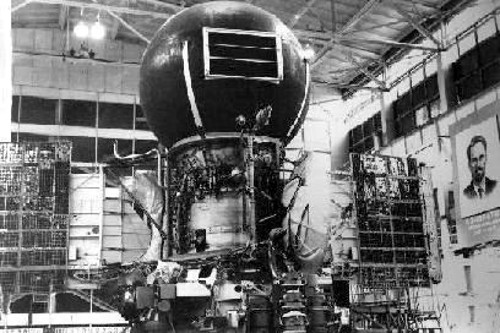
For this week in rocket history, we highlight a groundbreaking milestone in Venus exploration: Venera 9.
Venera 9 was launched on June 8th, 1975, on a Proton K/Blok D heavy-lift rocket from the Baikonur Cosmodrome, Site 81. The spacecraft was much bigger than the previous Venera spacecraft, nearly five metric tons, and just like those earlier versions, it was a variant of a spacecraft originally designed for a Mars mission.
Now, in the early days of uncrewed planetary missions, both the Russians and Americans launched pairs of probes during a planetary alignment. This way, if one of the probes failed they would still have a chance at results with the other one. So both Venera 9 and Venera 10 launched in summer 1975.
Both missions combined an orbiter and a lander. The orbiters were designed to image the planet in different wavelengths and perform other observations after dropping off the landers, which were intended to reach the surface of Venus. On October 20, 1975, Venera 9’s 1.5-metric ton entry capsule separated from the orbiter. The orbiter then made a burn to avoid following the lander down to the surface of the planet and set up an orbital insertion.

The capsule’s entry speed into the atmosphere was just under 11 km/s. At an altitude of 65 kilometers, a drogue parachute and a pilot parachute deployed to pull away the top of the heatshield. Shortly afterward, the main chute was deployed, reducing the velocity to 150 m/s. The final set of parachutes, four massive “canopy” parachutes with a total area of 180 square meters, deployed, and the bottom of the heatshield was jettisoned. All of these parachutes allowed the lander to fall slowly enough to study the atmosphere on the way down.
After twenty minutes on the canopy chutes, the lander was released to freefall. Venus’s lower atmosphere is extremely dense, so the lander could survive an impact at terminal velocity. The bottom of the lander was designed as a crumple zone to cushion the lander on its surface impact. The Venera 9 lander touched down at 05:13 UTC on October 22. The touchdown was in Beta Regio. In planetary geology, Regio means “a large area marked by reflectivity or color distinctions from adjacent areas.”
The lander transmitted for 53 minutes after touchdown, taking the first pictures of the surface. These pictures showed a surface covered in flat rocks. The Venera 10 lander transmitted for 65 minutes, and its pictures showed a smoother surface than the Venera 9 landing site 2,200 kilometers away. Both landers were only intended to last 30 minutes. They also each attempted a 360-degree panorama of their landing site with two cameras, but the lens cap on one of the cameras failed to eject, so the landers only managed images from one camera each.
Both landers discovered that the rocks on the Venusian surface were closer to basalt than granite, contradicting a previous theory. For basalt-like rocks to form, lava must have erupted to the surface and cooled quickly. For granite-like rocks to form, magma would have cooled slowly under the surface and only been revealed after lots of erosion. What this means is that Venus had surface volcanism at some point in the past.

Even though the Venera 9 and 10 landers only survived about an hour after touchdown, the mission continued high above the clouds, with their orbiters continuing to transmit data until mid-1976.
Statistics
To wrap things up, here’s a running tally of a few spaceflight statistics for the current year:
Toilets currently in space: 6: 3 installed on ISS, 1 on the Crew Dragon, 1 on the Soyuz, and 1 on Tianhe
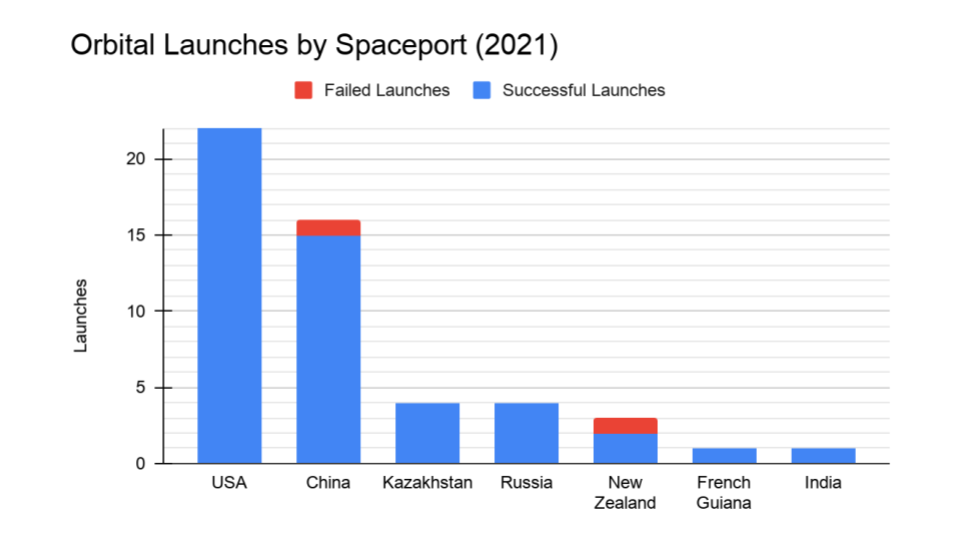
Total 2021 orbital launch attempts: 51, including 2 failures
Total satellites from launches: 1144
I keep track of orbital launches by where they launched from, also known as spaceport. Here’s that breakdown:
USA: 22
China: 16
Kazakhstan: 4
Russia: 4
New Zealand: 3
French Guinea: 1
India: 1
Random Space Fact
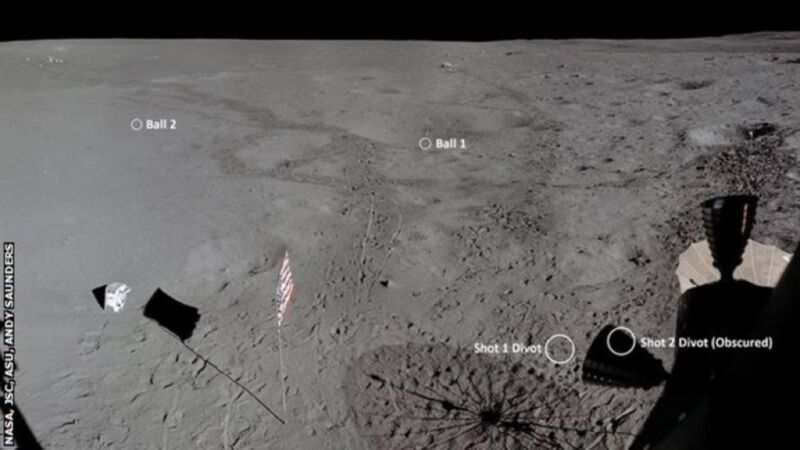
Your random space fact this week is that newly enhanced images from the Apollo 14 mission allowed for new estimates of just how far astronaut Alan Shepard hit his two golf balls all those fifty years ago. And the answer is that one went about 24 yards while the other made it 40 yards. The images were digitally enhanced by imaging specialist Andy Saunders.
Learn More
Even More SpaceX
- Launch discussion thread (Reddit)
- DART Launch Moves to Secondary Window (NASA)
- Launch video
OneWeb One-Third Complete
China Launches Supply Mission to Space Station
- China Spaceflight press release
- Launch video
- Docking video
China Sends Weather Satellite Into Orbit
- Feng Yun 4 info page (Gunter’s Space Page)
- Launch video
Upgraded Cargo Dragon soars to ISS
- Launch discussion thread (Reddit)
- NASA Invites Public to Share Excitement of SpaceX Cargo Launch (NASA)
- New Solar Arrays to Power NASA’s International Space Station Research (NASA)
- SpaceX’s 22nd Commercial Resupply Mission to Space Station Launches Water Bears, Squid, Solar Panels (NASA)
- Butterfly IQ Ultrasound (NASA)
- Effects of Microgravity on the Structure and Function of Proximal and Distal Tubule MPS (NASA)
- Launch video
SpaceX Launches Next SiriusXM Satellite
- Launch discussion thread (Reddit)
- Sirius XM Form 8-K (SEC)
- XM-3 and XM-4 info page (Gunter’s Space Page)
- Preparing for Launch: SXM-8 Arrives at Launch Base (Maxar)
- SXM 7 and 8 info page (Gunter’s Space Page)
- Launch video
This Week in Rocket History: Venera 9
- Beyond Earth: A Chronicle of Deep Space Exploration (NASA)
- Descriptor Terms (USGS)
- Venera 9 and 10 to Venus (Drew Ex Machina)
Random Space Fact: Alan Shepard’s Golf Balls
Credits
Host: Annie Wilson
Writers: Elad Avron, Dave Ballard, Gordon Dewis, Pamela Gay, Beth Johnson, Erik Madaus, Ally Pelphrey, and Annie Wilson
Audio and Video Editing: Ally Pelphrey
Content Editing: Beth Johnson
Executive Producer: Pamela Gay
Intro and Outro music by Kevin MacLeod, https://incompetech.com/music/


 We record most shows live, on Twitch. Follow us today to get alerts when we go live.
We record most shows live, on Twitch. Follow us today to get alerts when we go live.